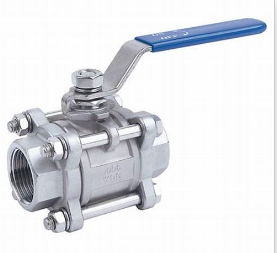High-Quality 316 Stainless Steel Ball Valve for Reliable Fluid Control Applications
The Versatility and Importance of 316 Stainless Steel Ball Valves
In the realm of industrial piping systems, reliability and durability are paramount. One of the most frequently utilized components in these systems is the ball valve, particularly the 316 stainless steel ball valve. Known for its exceptional corrosion resistance and mechanical properties, 316 stainless steel is often selected for applications in aggressive environments, making it an essential choice for a variety of industries.
Understanding 316 Stainless Steel
316 stainless steel is an alloy composed of iron, chromium, nickel, and molybdenum. The addition of molybdenum enhances its resistance to pitting and crevice corrosion, especially in chloride-rich environments. This makes it highly suitable for marine environments, chemical processing plants, and any application involving harsh chemicals. Because of these properties, 316 stainless steel valves can withstand higher temperatures and pressures compared to other materials.
Features of 316 Stainless Steel Ball Valves
1. Corrosion Resistance The primary advantage of 316 stainless steel ball valves is their excellent corrosion resistance. This is crucial for maintaining the integrity of fluid systems that might transport corrosive substances. With these valves, the risk of leakages or failures due to corrosion is significantly reduced.
2. Durability Ball valves are designed for longevity. The robust construction of 316 stainless steel means that these valves are less likely to deform or fail, providing a reliable shut-off mechanism in demanding conditions.
316 stainless steel ball valve

3. Versatile Applications 316 stainless steel ball valves are used across industries, including oil and gas, pharmaceuticals, food and beverage, and water treatment. Their ability to handle various fluids, gases, and temperatures makes them flexible solutions for numerous applications.
4. Easy Operation These valves feature a spherical disc (the ball) that rotates within the valve body. This design allows for quick on/off control, making it easy to manage the flow of substances through a system. Moreover, the low torque requirements for operation mean that these valves can be easily actuated by hand or with automatic actuators.
5. Minimal Pressure Drop The design of ball valves allows for a smooth flow of fluid with minimal turbulence. This results in a lower pressure drop compared to other valve designs, which is advantageous in situations where maintaining pressure is critical.
Installation and Maintenance
When installing 316 stainless steel ball valves, it’s essential to follow manufacturer guidelines to ensure proper sealing and operation. Regular maintenance, although generally minimal due to the durability of stainless steel, includes routine inspections for signs of wear and tear, particularly in high-stress applications.
Conclusion
In summary, 316 stainless steel ball valves offer a plethora of benefits that make them indispensable in modern industrial applications. Their remarkable resistance to corrosion, durability, and versatility ensure that they can meet the demands of a wide range of environments. With easy operation and low maintenance requirements, these valves not only enhance the efficiency of piping systems but also contribute to the overall safety and reliability of industrial processes. As industries continue to evolve, the importance of robust components like 316 stainless steel ball valves will only grow, supporting the global infrastructure with reliable performance.
-
The Key to Fluid Control: Exploring the Advantages of Ball Valves in Industrial SystemsNewsJul.09,2025
-
The Versatile World of 1, 2, and 3 Piece Ball ValvesNewsJul.09,2025
-
Stainless Steel Ball Valves: The Ideal Choice for Efficient Flow ControlNewsJul.09,2025
-
Optimizing Fluid Control with Ball Float ValvesNewsJul.09,2025
-
Manual Gate Valves: Essential for Control and EfficiencyNewsJul.09,2025
-
Everything You Need to Know About Butterfly ValvesNewsJul.09,2025
-
The Versatility of Wafer Type Butterfly ValvesNewsJul.08,2025




